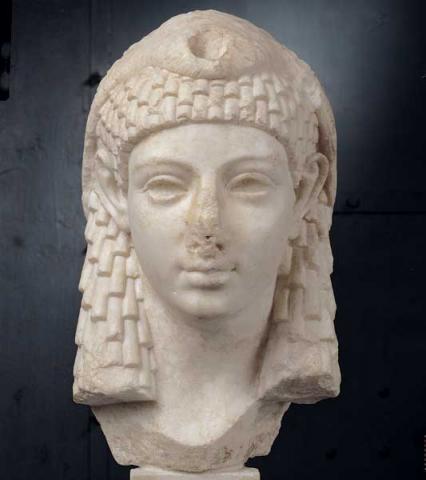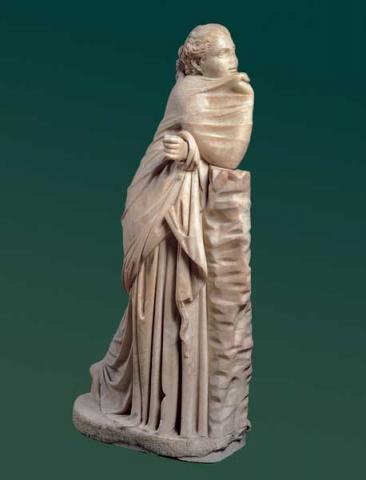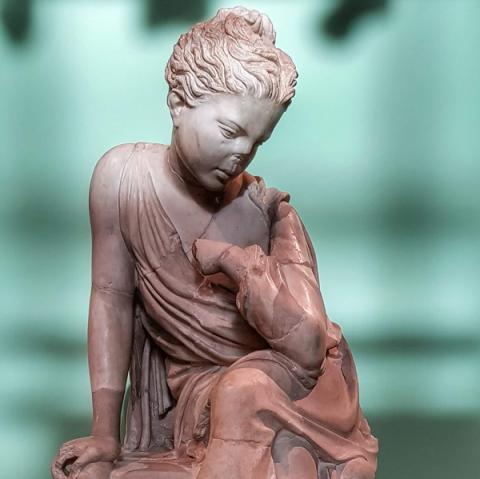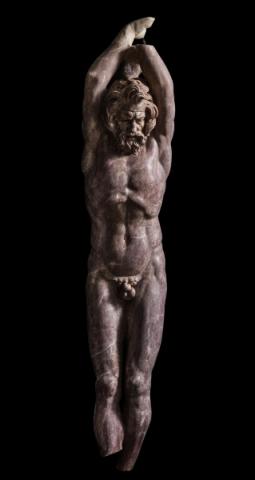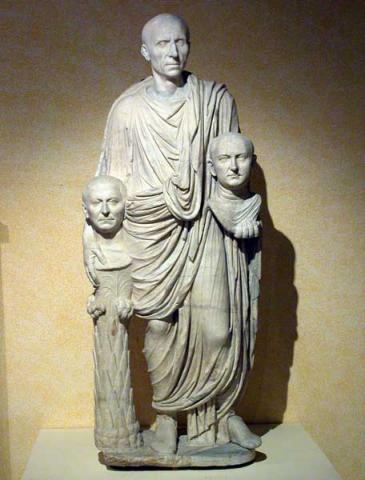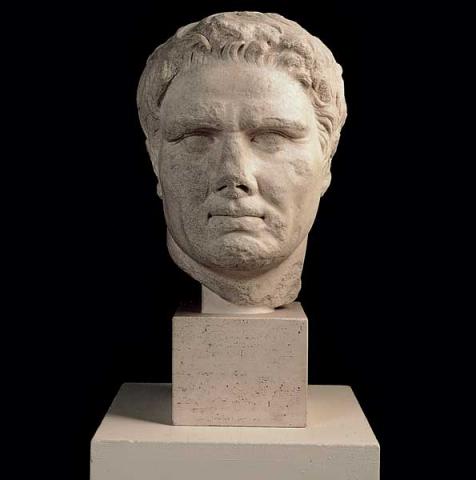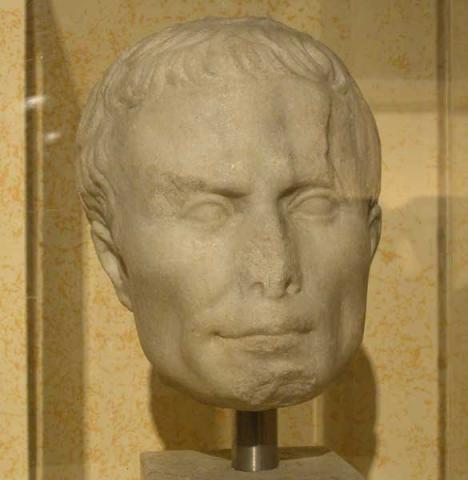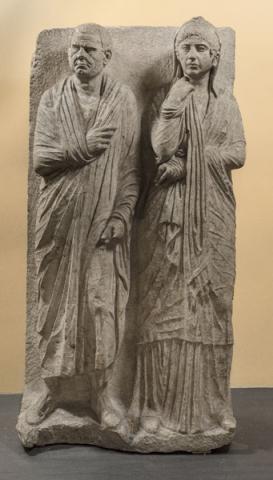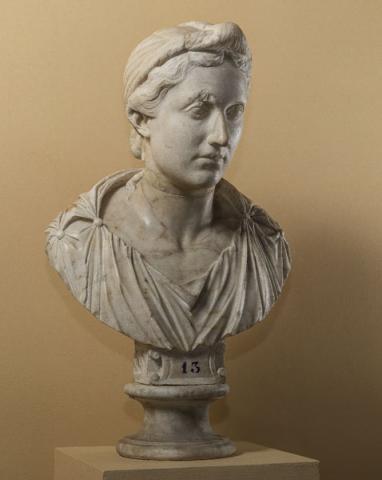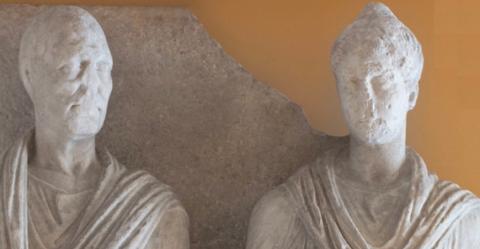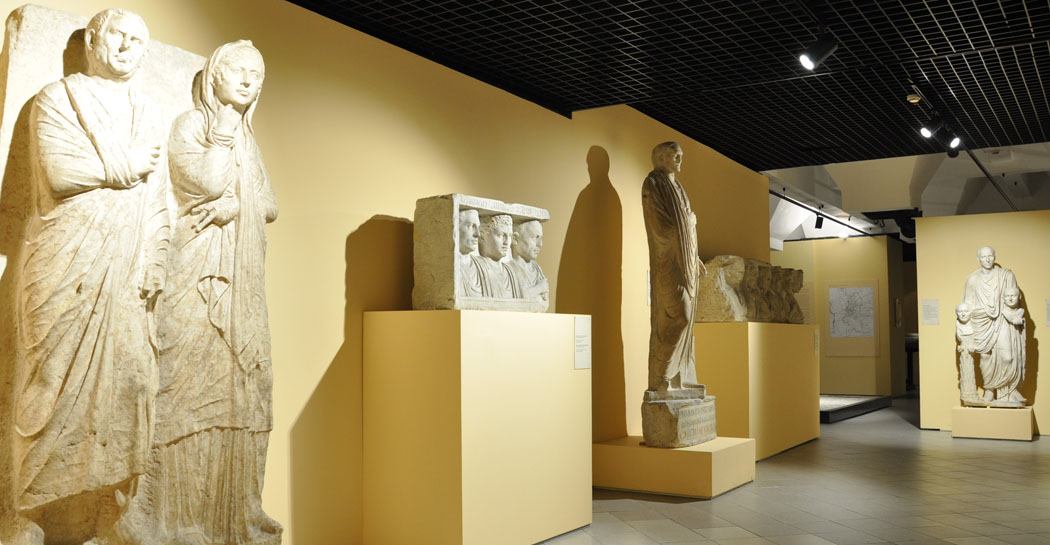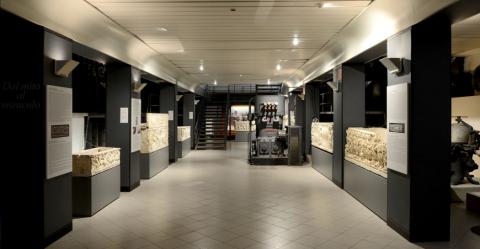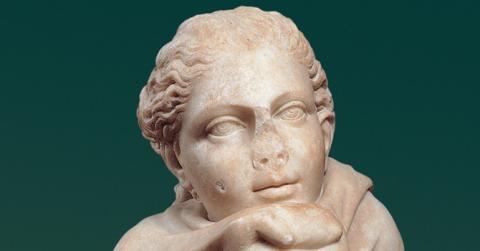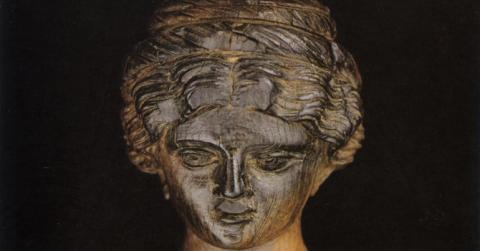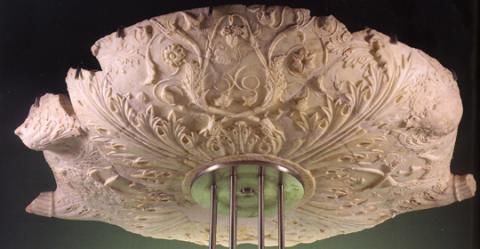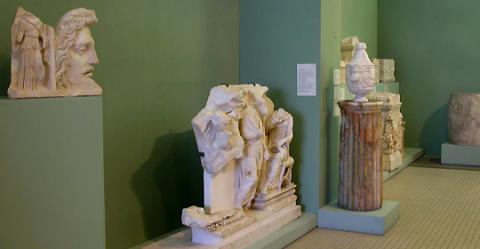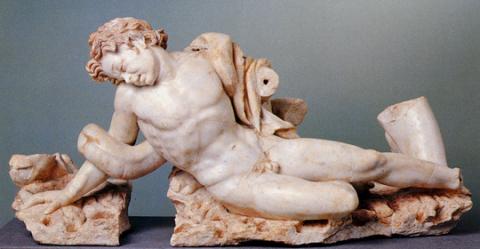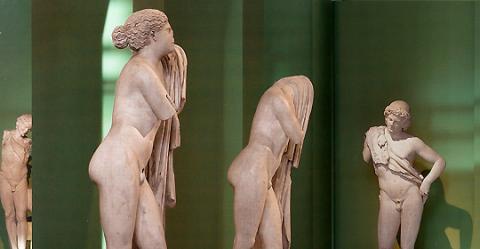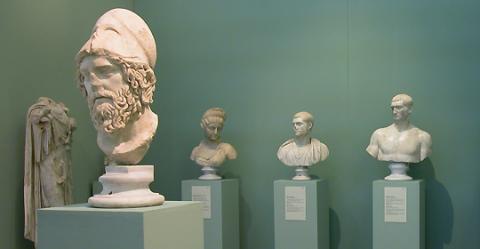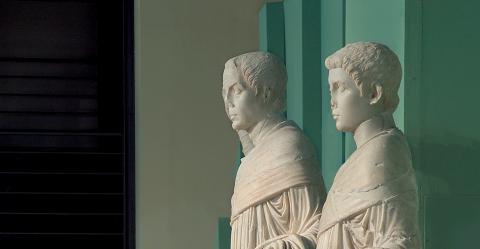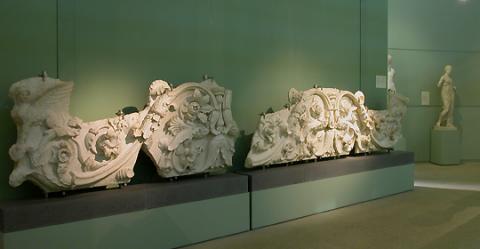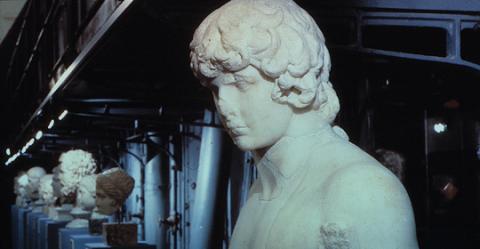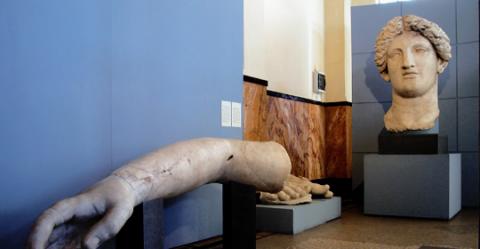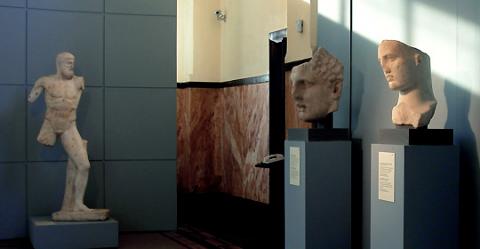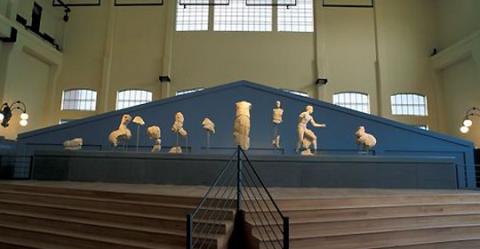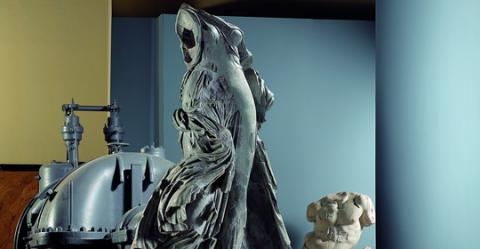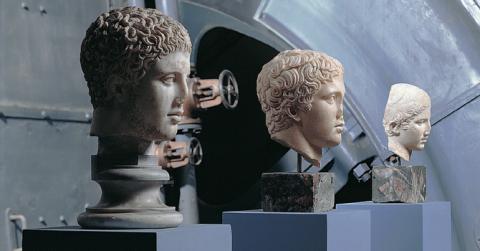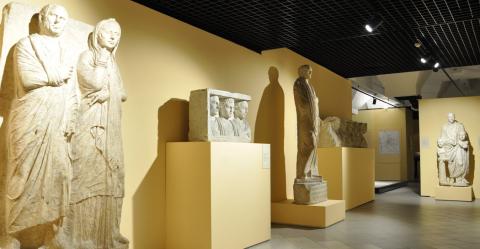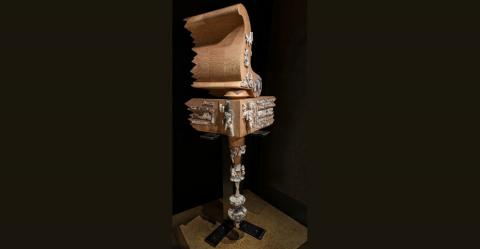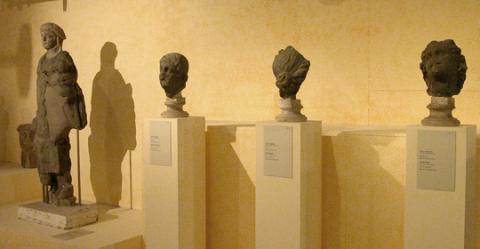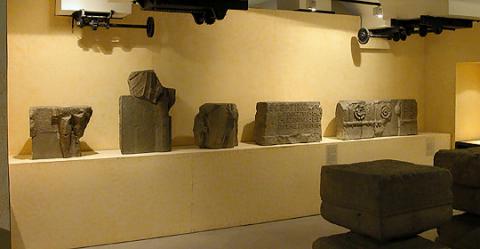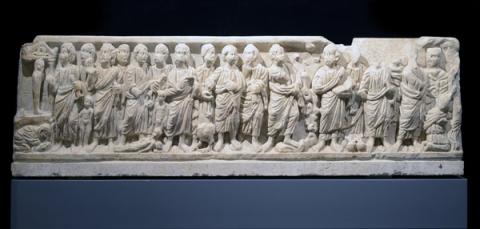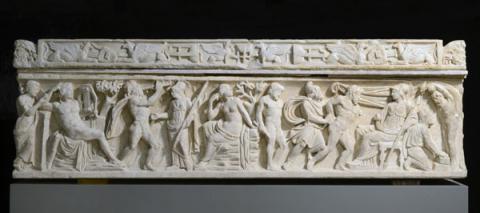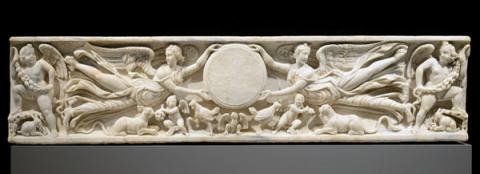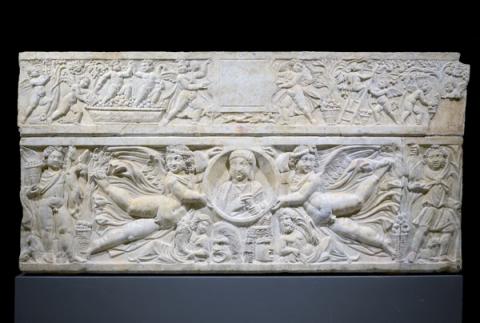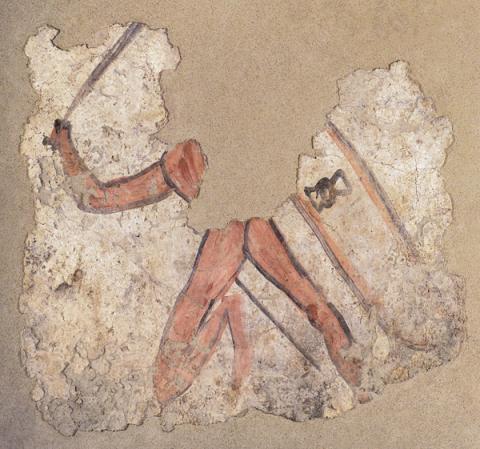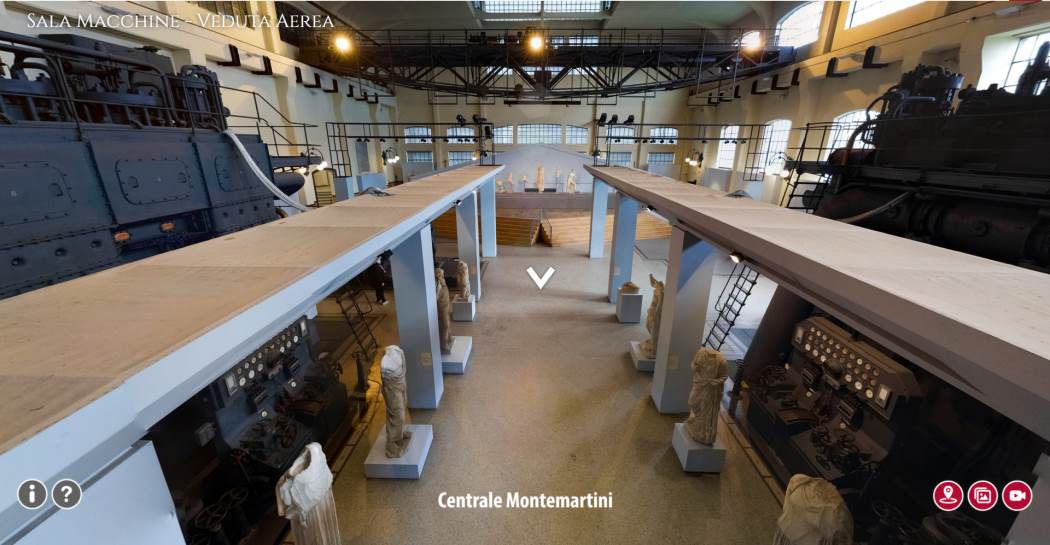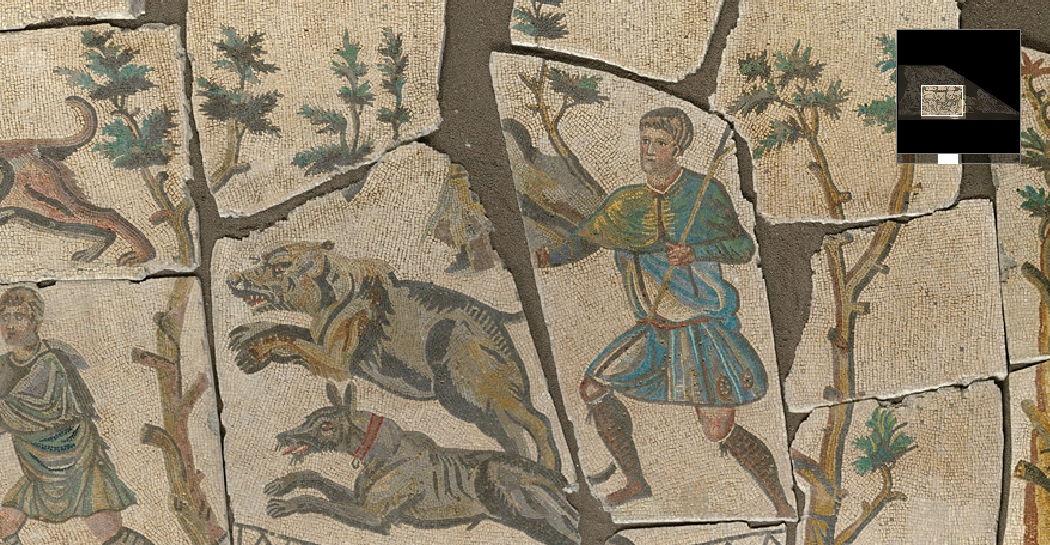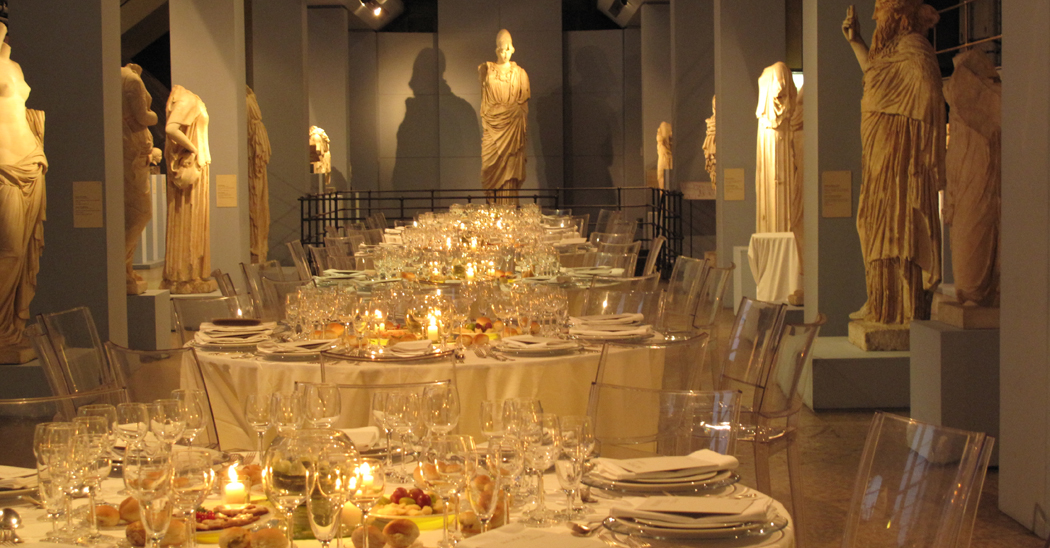Funerary relief of Marco Virgilio Eurisace
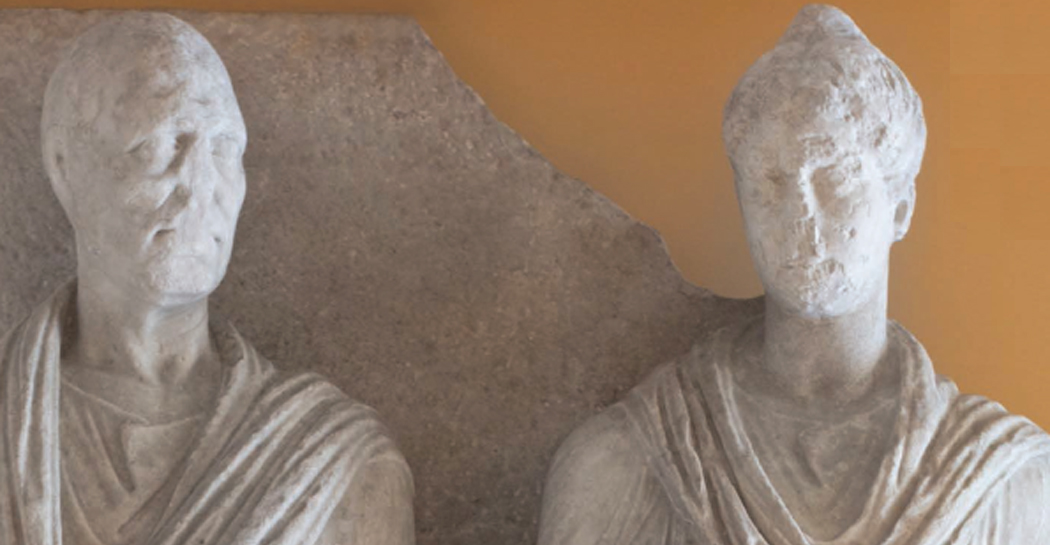
The funerary relief, carefully restored by the Capitoline Superintendence for Cultural Heritage and exhibited from March 1st 2019 in the “Sala Colonne”, depicts Marco Virgilio Eurisace, a rich freedman of Greek origin, and his wife Atistia. The relief is an important historical and artistic testimony of the late Republican age, as a fundamental part of the imposing sepulcher of Eurysaces built shortly after the middle of the 1st century BC. (40/30 BC), and brought to light in 1838 in the area formerly called “ad Spem Veterem”, today Porta Maggiore, where the remains are still visible.
The sculptural group originally stood on the eastern facade of the tomb and shows the married couple in a frontal position but with their heads facing each other, in order to highlight the bond uniting them in life. The figures pretty fully carved emerge from the bottom; the man wears the “toga” draped in the manner typical of the central years of the 1st century BC; his face consistently follows the trends of late Republican portraiture, showing the signs of the time with raw realism. The woman, on the other hand, is wrapped in the large cloak worn over the tunic and the portrait lets you recognize the hairstyle in vogue in those years: her hair divided by a central line into side bands and gathered in a high bun probably composed of braids.
On the occasion of the restoration to offer a more complete reading of the work, the head stolen in 1934 was given back to the female figure. A plaster face was thus created using, for the appearance and inclination, the photos taken before of the theft, when the relief was exposed outdoors along the walls near Porta Maggiore, in the place where in 1856 the Roma-Frascati Railway station was built.
The tomb of Marco Virgilio Eurisace was spared from the construction of the monumental arches of the Claudius aqueduct, in the mid-first century AD, but was involved in the construction of the Aurelian Walls in the third century and definitively incorporated at the beginning of the fifth century in the bastion built by the emperor Honorius to strengthen the walls at the Porta Labicana - Prenestina (today Porta Maggiore). Many centuries later, in 1838, the structures attributable to the reconstruction of Honorius were demolished by will of Pope Gregory XVI and during the works the tomb of Eurysaces was completely brought to light, on that occasion designed by the archaeologist Luigi Canina, who gave us one of the most complete documentation
In the sculptural decoration of the sepulcher, references to the profession of baker of the client can still be found today, represented by the reliefs that along the top of the upper floor illustrate the different stages of baking while in the inscription, repeated almost identical on the three surviving sides of the monument, on the strip that divides the lower body from the upper one, the owner of the sepulcher is remembered, Marco Virgilio Eurisace, baker and state contractor.
Masterpieces of the hall
The hall
In a long gallery are hung a series of portraits dating to the Ist century BC, giving the likenesses of individuals from the various social classes.
Branded slaves and members of the plebian classes are shown alone or in family groups in the funerary reliefs carved on the faces of the tombs, while the statue of the so-called “ Barberini wearing a toga” supporting the images of ancestors reflects its patrican family origins.


























